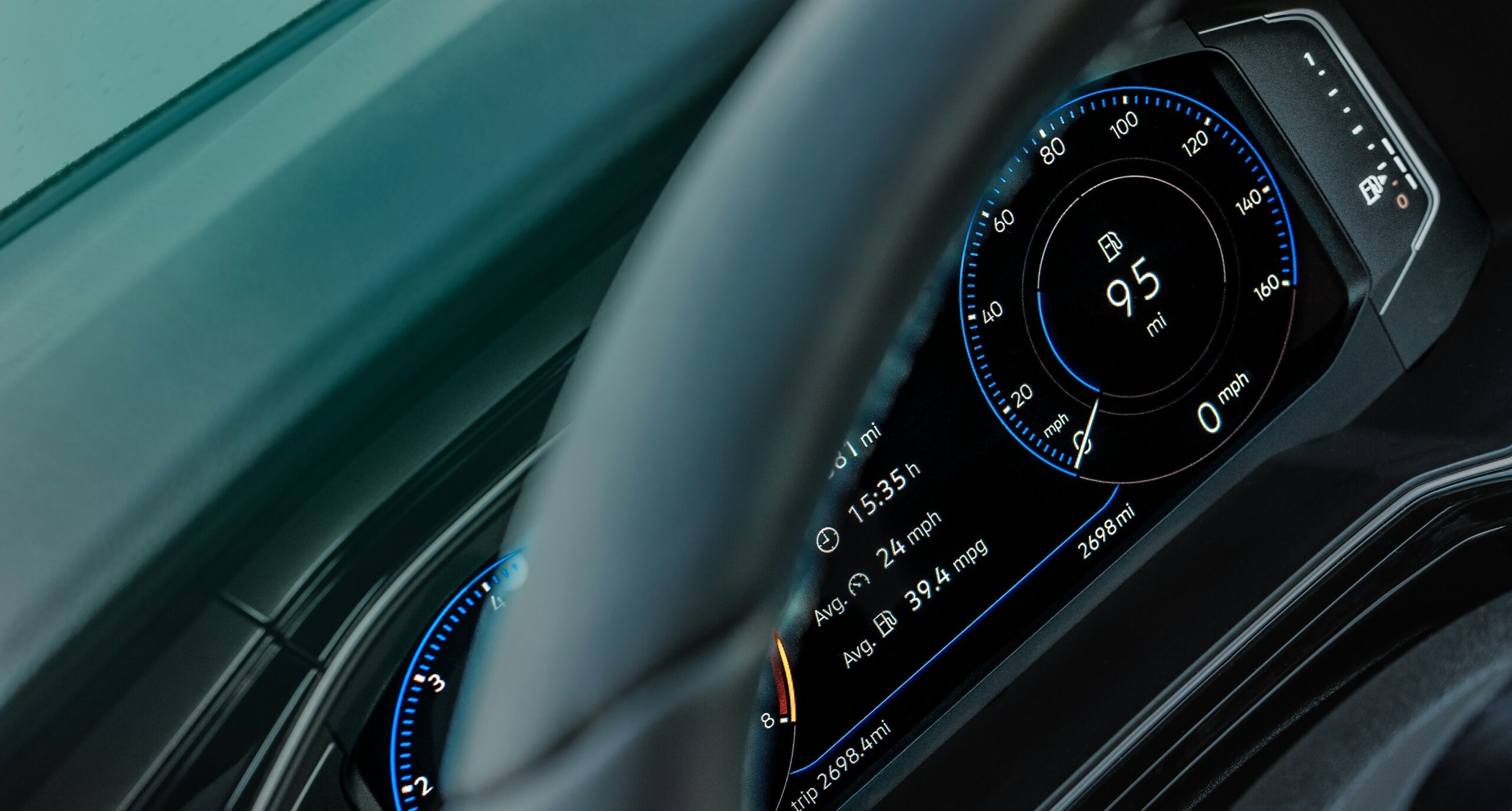Bearing Electrical Erosion in EV (Electric Vehicles)
- Introduction
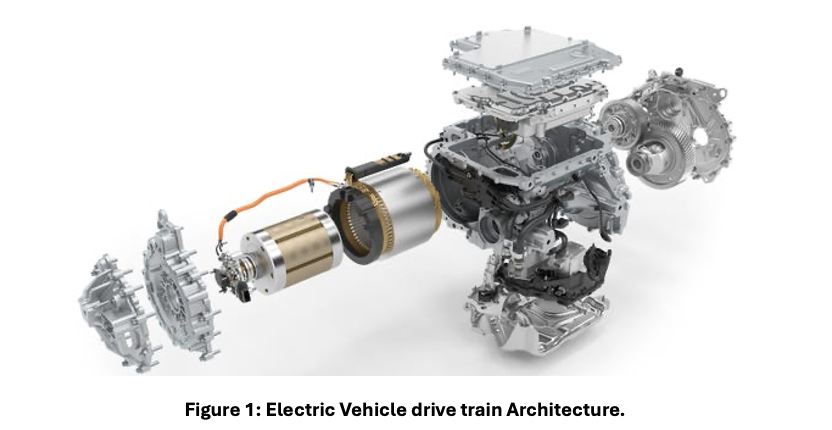
In recent years automotive industry is witnessing a cosmic transition, the market is progressing towards EV (Electric vehicles) away from ICE (internal combustion Engines), 10 years ago this trend was obscure. And in Belgium 16.3% of car sold in April 2023 is a BEV (Battery Electric Vehicle) which rose to 23.1% in April 2024 (1). Currently EVs have vaguely losing the momentum, but nevertheless they will be preferred for the city commutation. Usually, AC motors are employed as prime mover in a BEV because of it’s performance, controllability and durability are superior to DC motors, and we need bearings to support free and silent rotation of the electric motor drive shaft. The U.S. Department of Energy states nearly 67% of the AC motor failure is related to the bearing and electric erosion is one of the prominent root causes.
2. Overview of Bearing Electric erosion in EV
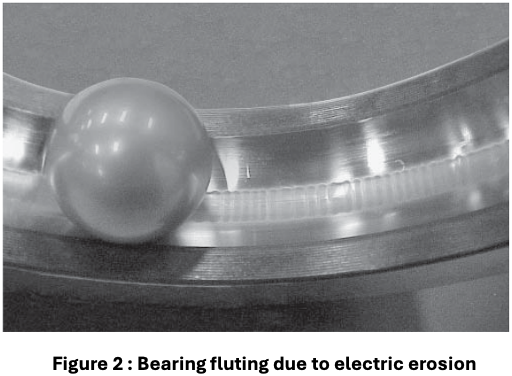
In modern electric equipment, especially electric vehicles, inverter control systems can lead to complex shaft voltages and bearing currents. Within an electric motor, many parts have electrical failure problems, and among which bearings are the most sensitive and vulnerable components it is termed as Electric Discharge Machining (EDM). In recent years, electrical failures in bearing have been frequently reported in electric vehicles, and the electrical failure of bearings has become a key issue that restricts the lifetime of all-electric motor-based power systems in a broader sense. The purpose of this article is to provide a comprehensive overview of the bearing premature failure in the mechanical systems exposed in an electrical environment represented by EV.
3. Root Cause for the Damage
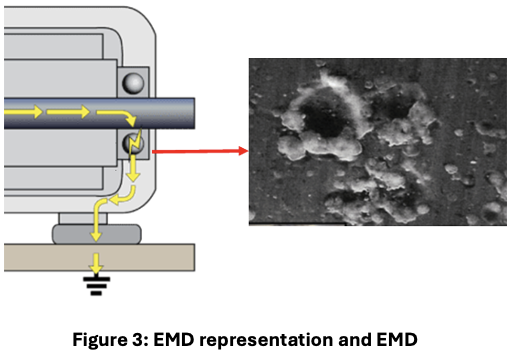
Electric Discharge Machining (EDM) currents pose a significant threat to bearings due to the arcing that occurs at certain voltages. This arcing results in uncontrolled discharging with high ampere values, which can alter the structure of the steel bearing rings and balls/rollers. As a result, the material melts (EMD pits) and re-solidifies on the metal surface [Fig 3], causing ripples several microns deep to form on the raceways of both the inner and outer rings. The first sign of this issue is usually excessive noise, which is particularly problematic for electric vehicles (EVs) that are becoming increasingly silent with advancements in technology surface [2].
4. Detect techniques.

Measuring the shaft voltage on VFD driven motors provides the user with valuable information to determine if there is a risk of bearing damage from EDM. Surveying and documenting shaft voltage levels and waveforms will help determine the appropriate mitigation method. The best time for shaft voltage measurements is during initial start-up in new or repaired motors operated by the VFD. Shaft voltage measurements should be incorporated into preventive and predictive maintenance programs and may be combined with vibration analysis and thermography [3].
5. Best Practice to protect motor bearing against Electric Discharge Machining
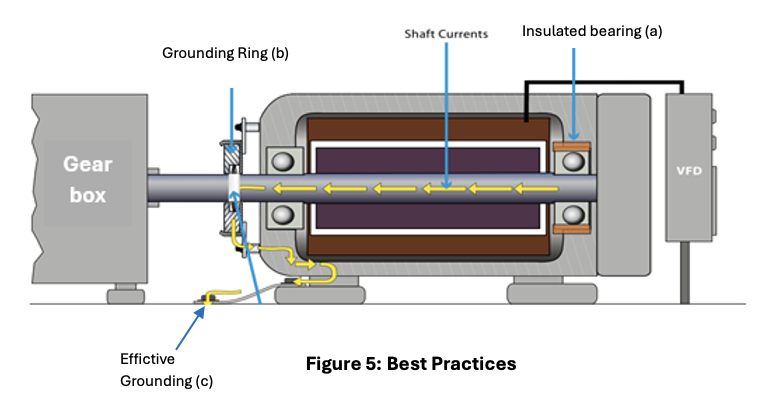
- Employ an insulated bearing on the non-drive side of the motor.
- Employ a grounding ring on the drive side of the motor closer to the motor bearing.
- Effective Grounding of the motor housing.
References :
- https://www.acea.auto/pc-registrations/new-car-registrations-13-7-in-april-2024-battery-electric-11-9-market-share/
- https://vfds.com/blog/bearing-currents/
- https://www.est-aegis.com/bearing-protection/shaft-voltage-and-bearing-currents/
- https://www.tribonet.org/news/general-topics/electric-discharge-machining-damages-in-bearings/
